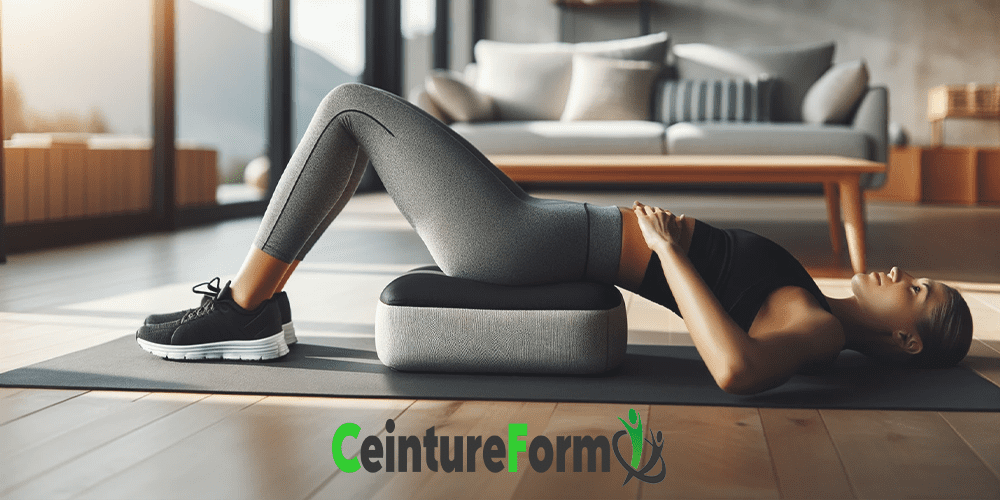Can you do abs when you have hemorrhoids: a question of health and precaution
Publié le :

Having hemorrhoids can be a bothersome problem, especially for those who like to exercise regularly. A question often asked is: can we continue to do abs in the presence of hemorrhoids ? This question is legitimate because abdominal exercises, among other physical activities, can put considerable pressure on the anal region and cause symptoms to worsen. This complex topic deserves in-depth exploration to understand the risks and determine best practices for maintaining your sports routine while managing this condition.
The impact of exercise on hemorrhoids
Exercising has many health benefits, but when you have hemorrhoids, you need to choose your activities carefully. Some exercises may worsen symptoms while others may help improve overall perineal health and reduce pressure on the anal area.
Exercises to avoid
Certain types of exercises can exert a excessive pressure on the anal canal and should therefore be avoided:
- Heavy lifting
- Sports involving prolonged sitting, such as cycling
- Intense abdominal exercises like crunches
- Highly aerobic activities without sufficient breaks
Recommended exercises
Of the gentle exercises can on the contrary help manage the symptoms of hemorrhoids and improve blood circulation:
- Walking
- Yoga, mainly gentle postures
- Light stretching
- Swimming
- Use a stepper at low intensity

Take precautions during abdominal exercises
When suffering from hemorrhoids, a few adjustments to your abdominal exercise routine can be beneficial without risking additional damage. Here are some tips to continue working your abdomen safely.
Choosing the right exercises
Instead of traditional crunches, it is possible to try gentler exercises on the abdominal level such as:
- Static boards
- Breathing exercises to engage the transversus abdominis
- Pilates movements specifically targeting the deep muscles
Monitor technique
It is essential to maintain good technique to avoid unnecessary pressure on the lower abdomen. For example :
- Engage the diaphragm and breathe deeply and calmly
- Avoid holding your breath during exercise
- Maintain a neutral posture with the spine aligned
Incorporate Regular Breaks
Do not underestimate the importance of breaks between sets of exercises . This helps release accumulated tension and allows better management of physical effort. It is advisable to:
- Alternate between long breaks and short exercise sessions
- Properly hydrate the body during exercise
- Consult a healthcare professional before resuming activity if pain persists

Adopt a suitable lifestyle
To limit hemorrhoid flare-ups, certain lifestyle changes can go a long way in relieving symptoms. These include dietary adjustments, changes in daily routine and, of course, engaging in moderate exercise.
Importance of diet
A diet rich in fiber helps prevent constipation, a major cause of hemorrhoids. The recommended foods are:
- Fresh fruit
- The green vegetables
- Whole grains
- Nuts and seeds
Drinking plenty of water is also crucial to facilitate intestinal transit and minimize strain during defecation.
Good post-exercise practices
After exercising, it is helpful to adopt certain habits such as:
- Take a warm bath to relax muscles and reduce inflammation
- Use cold compresses to reduce swelling and numb pain
- Apply specific ointments prescribed by a healthcare professional
Consult a specialist if in doubt
Certain situations may require medical intervention. It is prudent to consult a doctor if:
- Symptoms do not diminish despite precautions taken
- There is significant bleeding
- Constant pain disrupts quality of life
Optimization of breathing rate during exercise
Working on your breathing rate is significant not only to maximize the effectiveness of the exercises but also to ensure good oxygenation and reduce the pressure exerted on the perineal and abdominal muscles.
Effective breathing techniques
Specific techniques can be practiced to optimize breathing, including:
- There slow diaphragmatic breathing
- Synchro-respiratory breathing exercises
- The practice of prana yama (yogic breathing)
This not only better engages the abdominal muscles but also reduces the risk of anal pressure retention due to poor breathing methods.
Understanding what hemorrhoids are
Hemorrhoids are vascular structures located in the anal canal that play a crucial role in continence. When they become swollen or inflamed , they cause significant discomfort and pain. Several factors can contribute to their occurrence, including poor diet, lack of exercise and excessive straining during defecation.
Causes and symptoms of hemorrhoids
Several causes can lead to hemorrhoids:
- Repetitive intestinal efforts
- Prolonged sitting on the toilet
- Obesity
- Pregnancy
- Diet low in fiber
Common symptoms include:
- Pain during defecation
- Rectal bleeding
- Itching around the anus
- Swelling and inflammation
Recent Articles
- Cherry Tattoo Meanings: Symbols and Ideas
- The key elements of the men's guinguette style
- What color shoes with a royal blue dress
- Which Jacket to Wear with a Navy Jumpsuit: Ultimate Guide to the Perfect Look
- The Loewe it-bag: an icon of contemporary fashion
- Women's gifts at cadeaux.com: ideas and inspiration for all occasions

